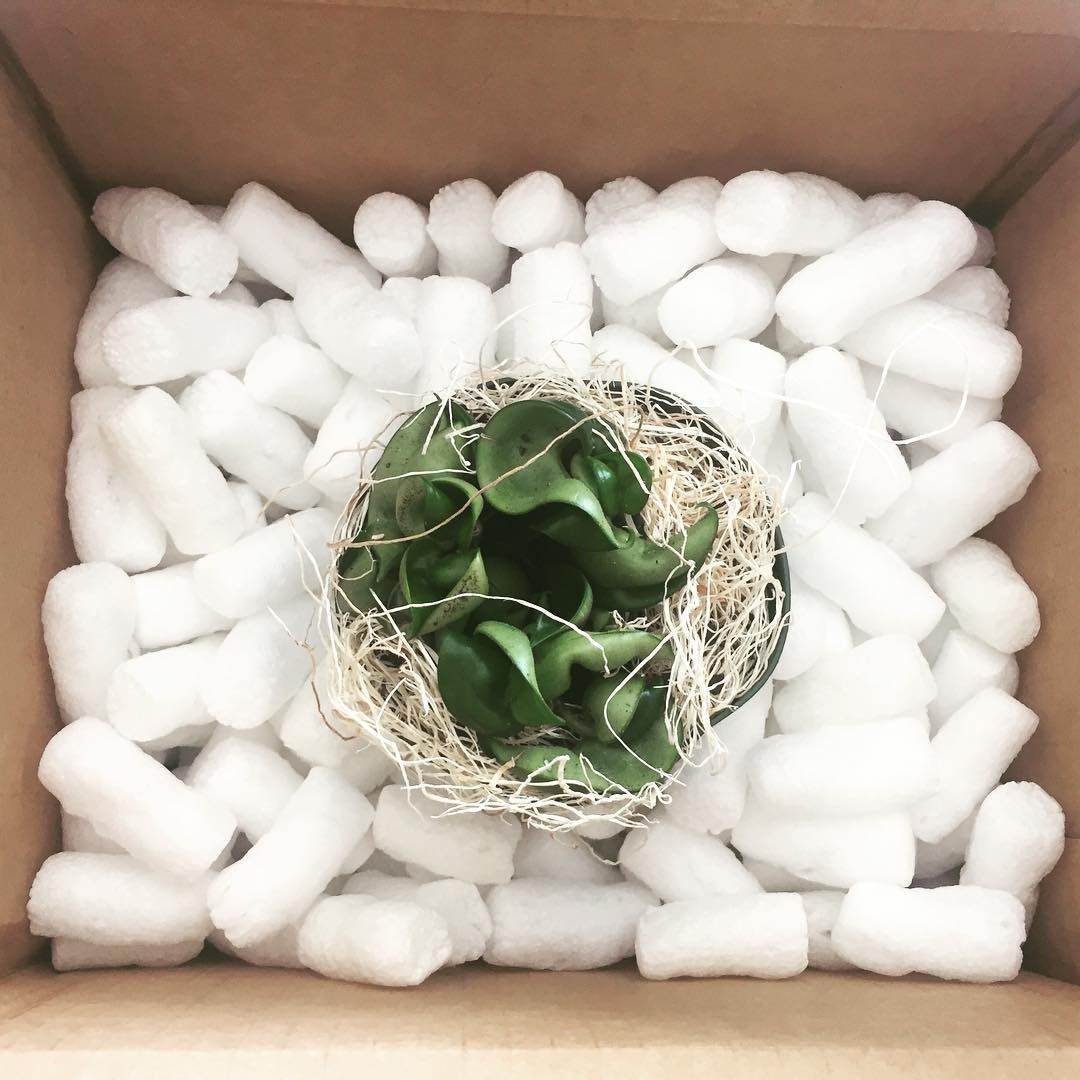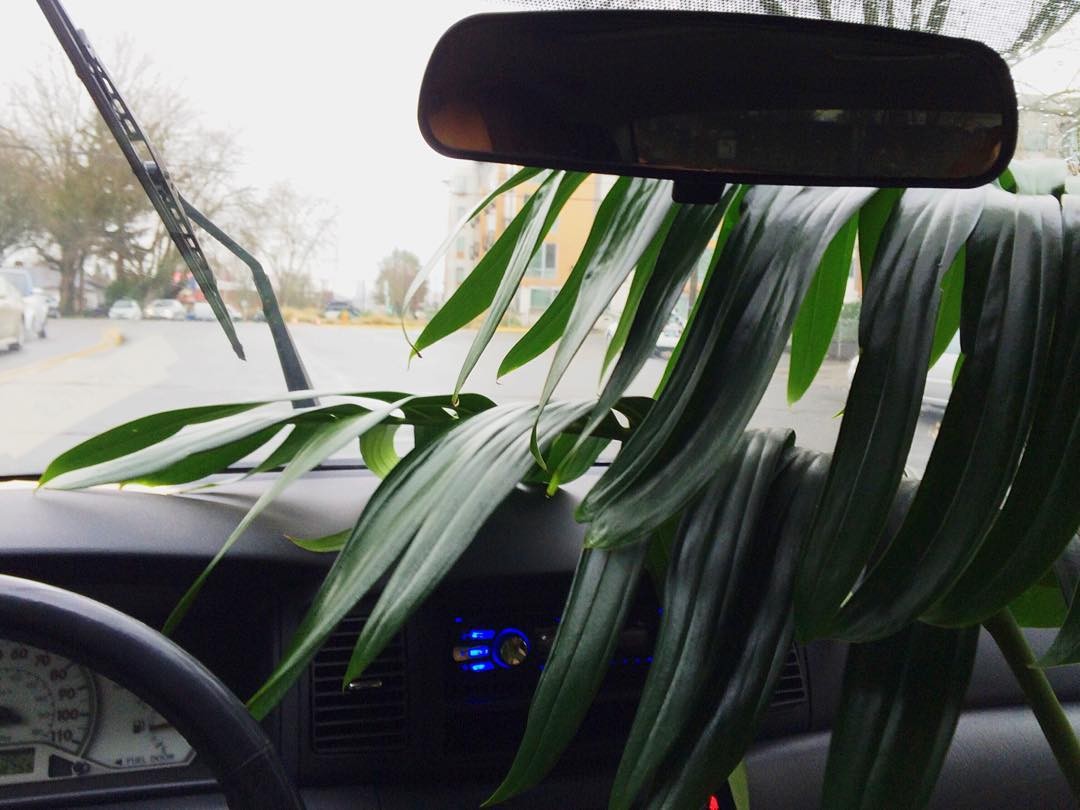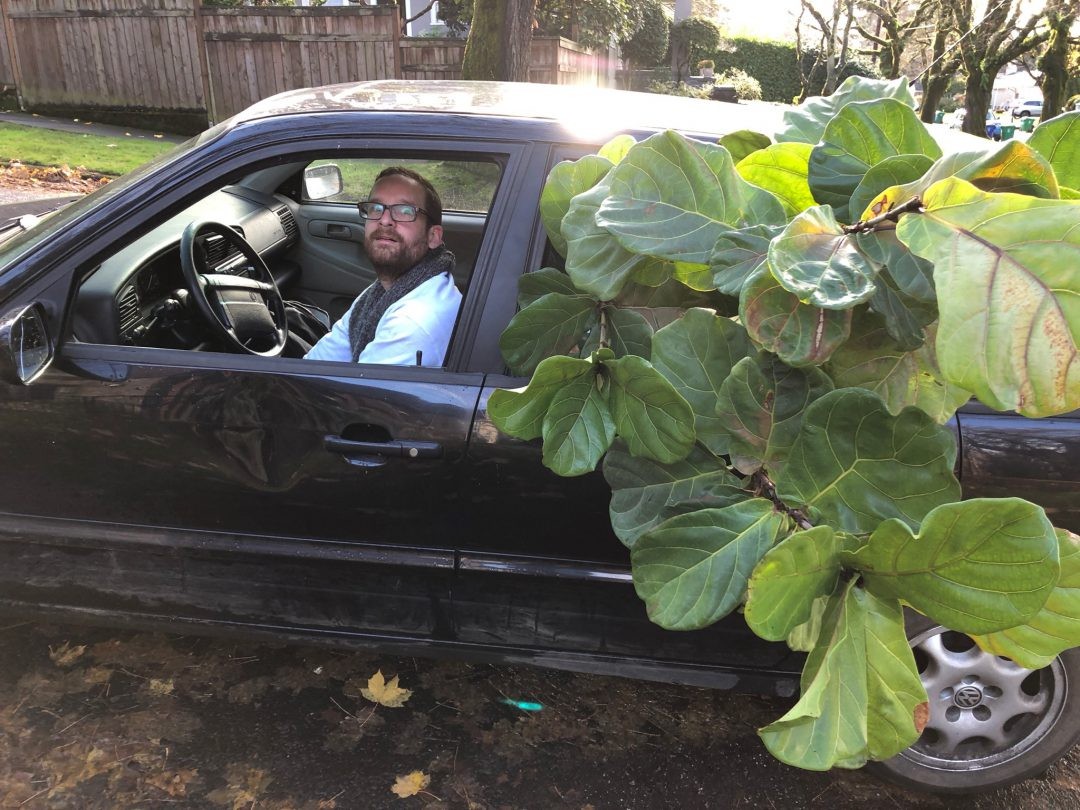Traveling with plants might seem daunting, but with the right approach, it can be a rewarding experience. Whether you’re moving, gifting, or simply expanding your green collection, TRAVELS.EDU.VN is here to guide you. Discover essential tips and tricks for safely transporting your beloved plants, ensuring they arrive at their destination healthy and vibrant. This guide covers everything from preparing your plants to navigating airline regulations and shipping options.
1. Understanding the Basics of Traveling with Plants
Traveling with plants requires careful planning and execution. Plants, unlike inanimate objects, are living organisms that react to environmental changes. Understanding their needs is crucial for a successful journey.
1.1. Why Travel with Plants?
There are many reasons why you might want to travel with plants. Maybe you are:
- Moving to a new home: You don’t want to leave your beloved plants behind.
- Gifting plants: Sharing your propagated plants with friends and family.
- Expanding your collection: Finding a rare plant during your travels and wanting to bring it home.
1.2. Key Considerations Before You Start
Before embarking on your journey, consider these factors:
- Plant type: Some plants are more resilient than others.
- Distance: Short trips are easier than long-distance moves.
- Transportation method: Car, plane, or mail each have their own challenges.
- Destination climate: Ensure your plants can adapt to their new environment.
- Regulations: Check for any state or international restrictions on transporting plants.
2. Preparing Your Plants for Travel
Preparation is key to minimizing stress on your plants during travel. A little care beforehand can make a big difference in their survival and health.
2.1. Pre-Travel Plant Care
A week or two before your trip, give your plants some extra attention:
- Pruning: Remove dead or damaged leaves and trim long vines to make handling easier.
- Repotting: Consider using plastic nursery pots to reduce weight and prevent breakage.
- Cleaning: Gently dust the foliage with a damp cloth or soft brush.
- Pest Control: Treat any pest infestations to prevent them from spreading.
- Watering: Water thoroughly a few days before departure, allowing the soil to be lightly moist but not waterlogged.
2.2. Choosing the Right Containers
Selecting the right containers is essential for safe transport:
| Container Type | Advantages | Disadvantages | Best For |
|---|---|---|---|
| Plastic Nursery Pots | Lightweight, durable, less prone to breakage | Not as aesthetically pleasing as decorative pots | All types of plants |
| Cardboard Boxes | Provides protection and stability, can be easily customized | Can be bulky and take up space | Small to medium-sized plants |
| Fabric Pots | Breathable, lightweight, and flexible | May require additional support to prevent tipping | Herbs, succulents, and smaller houseplants |
| Garbage Bags | Useful for containing spills and providing temporary protection | Not suitable for long-term storage or delicate plants | Containing larger pots to prevent soil spillage |
| Bird Cages/Dog Crates | Offers protection for delicate plants and prevents them from being crushed | Can be bulky and difficult to transport | Delicate or prized specimens |
2.3. Packing Materials
- Newspaper: Use to pack pots tightly and prevent movement.
- Bubble Wrap: Provides extra cushioning for fragile plants.
- Sphagnum Moss: Keeps roots moist during transport.
- Packing Peanuts: Fill empty spaces in boxes to prevent shifting.
- Butcher Paper: Wrap plants to protect foliage from damage.
3. Traveling with Plants by Car
Traveling by car offers more control over the environment, but it also presents unique challenges.
3.1. Creating a Comfortable Environment
- Temperature Control: Keep the car warm on cold days and cool on hot days.
- Sunlight: Avoid direct sunlight, which can cause sunburn. Use sheer cloths or partially cover boxes.
- Air Circulation: Ensure adequate ventilation to prevent overheating or moisture buildup.
3.2. Packing Plants Securely
- Boxes: Use sturdy boxes to stabilize plants. Arrange them on the floor or seats, not in the trunk.
- Securing: Nestle plants inside boxes, gently spooling any loose vines on top.
- Air Holes: Cut air holes in boxes if you plan to keep them covered.
- Damp Newspaper: On hot days, pack pots with lightly dampened newspaper or sphagnum moss to keep plants cool.
3.3. Protecting Your Car
- Shower Curtain/Tarp: Protect your car from dirt and moisture.
- Garbage Bags: Place large pots in garbage bags to avoid spillage, but leave the top slightly open for air circulation.
3.4. During the Drive
- Rest Stops: Take breaks to expose plants to bright, indirect light.
- Overnight Stays: Bring plants inside with you at night to avoid temperature extremes.
- Watering: Water sparingly if plants dry out.
3.5. State Regulations
- Check Restrictions: Some states, like California, Arizona, and Florida, have strict regulations.
- Declare Plant Material: Be prepared to declare your plants at state borders.
- Brush Up on Current Rules: Consult the USDA website for updated guidelines.
4. Traveling with Plants on Planes
Flying with plants requires extra preparation and awareness of airline regulations.
4.1. Airline Policies
- Check with the Airline: Each airline has its own policies regarding plants.
- Carry-on vs. Checked Bags: Plants are usually allowed in both, but check size and weight restrictions.
4.2. Preparing Plants for Inspection
- Unpacking: Be prepared to unpack plants for inspection.
- X-ray: Plants will need to go through the x-ray machine.
- Plastic Bags: Wrap pots in plastic bags to prevent soil spillage.
4.3. Bare Root Method
Consider keeping plants “bare root” to comply with regulations and reduce the risk of pests:
- Remove Plant: Ease the plant out of its pot.
- Clean Roots: Tease off excess soil with your fingers and rinse gently in lukewarm water.
- Wrap Roots: Swaddle the roots in damp moss or paper towels.
- Repot: Repot promptly upon arrival at your destination.
4.4. International Travel
- Strict Rules: National agricultural departments often have strict rules about which plants are allowed across borders.
- Invasive Species: Even one invasive plant or insect can harm delicate ecosystems.
- Contact Agriculture Department: Contact your destination country’s department of agriculture to find out about potential fees and permits.
- Check U.S. Customs & Border Protection: Visit the U.S. Customs & Border Protection website for more info.
5. Sending Plants in the Mail
Shipping plants is a convenient option for gifting or when you can’t travel with them yourself.
5.1. Preparing Plants for Shipping
- Plastic Pots: Ship plants in their plastic nursery pots or bare root.
- Watering: Water a day or two before shipping, ensuring the soil is moist but not wet.
5.2. Packing the Plant
- Cover Soil: Cover the soil around the base of the plant to prevent it from shifting. Taping newspaper works well.
- Create a Sleeve: Roll the plant in butcher paper or newspaper to protect the foliage.
- Choose a Box: Find a box that is only slightly larger than the plant.
- Insulate: Insulate the plant with shredded newspaper, packing peanuts, or crumpled paper to prevent shifting.
5.3. Special Considerations
- Winter Shipping: Use heat packs to prevent freezing.
- Summer Shipping: Avoid shipping during heat waves.
- Notify Recipient: Let the recipient know when to expect their box.
- Labeling: Label the box “contains live plants” so mail carriers know to treat it with care.
5.4. Shipping Options
- USPS Priority: Recommended for its max of 3 days in transit.
- Other Carriers: Research other options like FedEx or UPS for their specific plant shipping policies.
6. Temperature Considerations
Tropical plants are sensitive to temperature extremes. Understanding how temperature affects them is crucial.
6.1. Ideal Temperature Range
- 65-75°F (18-24°C): Most tropical plants thrive in this range.
6.2. Cold Damage
- Symptoms: Sudden blackening or yellowing of leaves, wilted appearance.
- Treatment: Move the plant to a warm, well-lit spot and provide gentle care.
6.3. Heat Damage
- Symptoms: Severely wilted, curled, or crisp leaves. Sunburn may appear as bleached spots.
- Treatment: Move the plant to a cool place with gentle light, provide humidity, and water if the soil is dry.
7. Post-Travel Plant Care
After arriving at your destination, give your plants some time to recover and acclimate.
7.1. Initial Assessment
- Check for Damage: Inspect plants for any signs of stress, pests, or diseases.
- Clean Foliage: Gently clean leaves to remove any dust or debris.
7.2. Acclimation Period
- Gradual Adjustment: Gradually introduce plants to their new environment.
- Indirect Light: Start with indirect light and slowly increase exposure.
- Monitor Watering: Adjust watering based on the plant’s needs and the new climate.
7.3. Ongoing Care
- Regular Maintenance: Continue with regular pruning, fertilizing, and pest control.
- Environmental Adjustments: Make any necessary adjustments to temperature, humidity, and light.
8. Unique Challenges and Solutions
Some plants present unique challenges when traveling. Here are some tips for specific types:
8.1. Succulents
- Challenge: Susceptible to rot if overwatered.
- Solution: Allow soil to dry completely before watering. Pack bare root if possible.
8.2. Ferns
- Challenge: Require high humidity.
- Solution: Pack with damp sphagnum moss. Mist regularly after arrival.
8.3. Orchids
- Challenge: Delicate flowers and roots.
- Solution: Provide extra cushioning. Pack bare root to protect roots.
8.4. Large Plants
- Challenge: Difficult to transport.
- Solution: Prune aggressively. Consider hiring a professional mover.
9. Why Choose TRAVELS.EDU.VN for Your Napa Valley Plant-Lovers Getaway?
Planning a trip that combines your love for plants and travel can be overwhelming. Let TRAVELS.EDU.VN take the stress out of your Napa Valley adventure. We specialize in creating customized itineraries that cater to plant enthusiasts, ensuring a seamless and unforgettable experience.
9.1. Expertly Curated Plant-Focused Tours
TRAVELS.EDU.VN designs tours that showcase the best of Napa Valley’s botanical beauty. From lush vineyards to serene gardens, we’ll guide you through the region’s most enchanting plant-filled destinations.
9.2. Hassle-Free Planning
We handle all the details, from accommodations and transportation to guided tours and exclusive access to private gardens. Relax and enjoy your plant-filled getaway without the stress of planning.
9.3. Local Insights
Our team has deep knowledge of Napa Valley’s plant life and hidden gems. We’ll share insider tips and take you to places that only locals know about.
9.4. Sustainable Travel
TRAVELS.EDU.VN is committed to sustainable tourism practices. We partner with eco-friendly businesses and promote responsible travel to protect Napa Valley’s natural beauty.
10. Napa Valley: A Plant Lover’s Paradise
Napa Valley offers a unique blend of natural beauty and horticultural excellence. Explore its stunning landscapes and discover its hidden plant treasures.
10.1. Must-Visit Gardens
- Domaine Carneros: Known for its beautiful gardens and sparkling wines.
- Frog’s Leap Winery: Features a biodynamic garden with a variety of herbs and vegetables.
- Sterling Vineyards: Offers panoramic views and beautifully landscaped grounds.
10.2. Botanical Highlights
- California Native Plants: Discover the region’s unique flora.
- Vineyard Ecosystems: Learn about the plants that support grape cultivation.
- Medicinal Herbs: Explore gardens dedicated to healing plants.
10.3. Plant-Themed Activities
- Wine and Herb Pairings: Enjoy a sensory experience that combines the flavors of wine and herbs.
- Floral Arrangement Workshops: Create your own beautiful floral arrangements using local blooms.
- Garden Tours: Join guided tours that explore Napa Valley’s most stunning gardens.
FAQ: Traveling With Plants
1. Is it legal to transport plants across state lines?
- Yes, but regulations vary by state. Check with the USDA and the destination state’s Department of Agriculture.
2. Can I take plants on a plane internationally?
- Yes, but it’s complicated. Contact the destination country’s Department of Agriculture for specific rules and permits.
3. What’s the best way to pack plants for shipping?
- Use plastic pots, cover the soil, create a protective sleeve, and insulate with packing material.
4. How do I prevent my plants from freezing in transit?
- Use heat packs and avoid shipping during extreme cold.
5. What should I do if my plant shows signs of cold damage?
- Move it to a warm, well-lit spot and provide gentle care.
6. How often should I water my plants during a long car trip?
- Water sparingly, only when the soil feels dry.
7. Can I use regular potting soil when repotting after travel?
- Yes, but consider using a mix that’s appropriate for the specific plant type.
8. How long does it take for plants to recover after traveling?
- It varies, but most plants need a few weeks to fully acclimate.
9. Are there any plants that are easier to travel with than others?
- Succulents and air plants are generally more resilient.
10. What are the most common mistakes people make when traveling with plants?
- Overwatering, exposing plants to extreme temperatures, and not checking regulations.
Ready to plan your plant-filled adventure in Napa Valley? Let TRAVELS.EDU.VN take care of all the details. Contact us today at 123 Main St, Napa, CA 94559, United States or call us at +1 (707) 257-5400. Visit our website at TRAVELS.EDU.VN to learn more and book your personalized tour. Don’t wait, your botanical paradise awaits ]
{width=1080 height=1080}{width=1080 height=1080}{width=1080 height=810}{width=1080 height=810}
